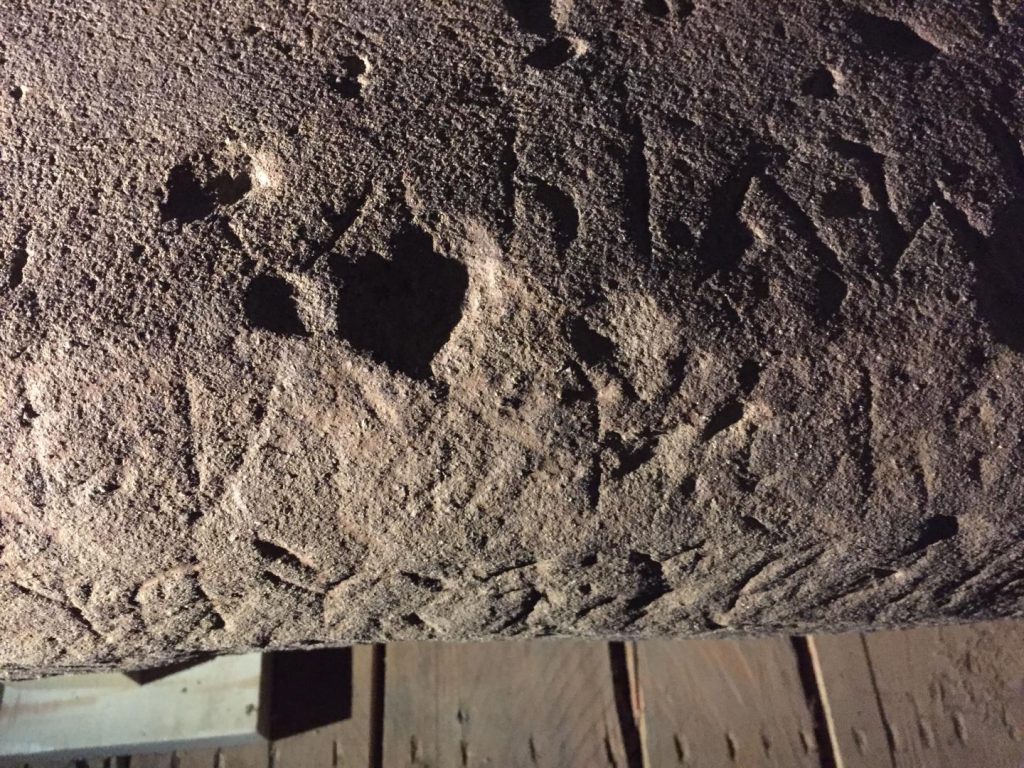MUGELLO VALLEY, ITALY – In north central Italy, just northeast of Florence, in the final stages of digging at Mugello Valley, archaeologists have finally found something that may be the most important Etruscan find ever. It’s a sandstone stele dating back to the 6th century BC. It’s four feet tall and two feet wide, and it references the goddess Uni – an important mother goddess for the Etruscan people.“We can at this point affirm that this discovery is one of the most important Etruscan discoveries of the last few decades. It’s a discovery that will provide not only valuable information about the nature of sacred practices at Poggio Colla, but also fundamental data for understanding the concepts and rituals of the Etruscans, as well as their writing and perhaps their language.” – Professor Gregory Warden.
The mention is part of a text that is, perhaps, the longest Etruscan inscription carved in stone that we have on record. It indicates that worship of this mother goddess was central to life at Poggio Colla, an important settlement in Italy for ancient Etruscans.
Who were the Etruscans? Why is understanding them so important? Well, they once were the dominating culture in Italy before Rome came along and changed the world. The Etruscans were responsible for teaching early Roman settlements the basics of urban infrastructure, including drainage systems. Eventually, they would be completely absorbed into the new Roman Empire, and would fade out of our memory, only existing as a brief mention in history textbooks.
![An ancient Etruscan settlement. [PHOTO: wikimedia]](https://historythings.com/wp-content/uploads/2016/09/1024px-20090414-Cività-di-Bagnoregio-1024x688.jpg)
An ancient Etruscan settlement. [PHOTO: wikimedia]
It was found embedded in a temple wall at Poggio Colla. It’s an Etruscan settlement that has a long archaeological history. Historians have been debating whether or not there was a fertility cult at Poggio Colla ever since they found a ceramic fragment there with the first birth scene ever depicted in European art. This stele seems to confirm that theory.
“The location of its discovery — a place where prestigious offerings were made,” Professor Warden explained, “– and the possible presence in the inscription of the name of Uni, as well as the care of the drafting of the text, which brings to mind the work of a stone carver who faithfully followed a model transmitted by a careful and educated scribe, suggest that the document had a dedicatory character.”
So perhaps the stele was inscribed when the temple was built and was meant to hold the inscription that would dedicate the temple to the fertility goddess. It would make sense, then, why the builders added it into the architecture in such a prominent position. The fertility cult had been literally built in as part of the physical framework of the temple.
Professor Warden has another theory about the purpose of the stele, though.
“It is also possible that it expresses the laws of the sanctuary,” he said, “– a series of prescriptions related to ceremonies that would have taken place there, perhaps in connection with an altar or some other sacred space.”
We won’t know that until the linguists working on the stele decipher it completely, which could prove to be quite a feat. The text consists of over 120 characters. Archaeologists have a basic understanding of Etruscan grammar, and there are a few in the world who can roughly translate the words and the alphabet, but the stele contains several words that nobody has ever seen before now – mostly because our only previous examples of the Etruscan language have been funerary texts.
It’s clear that this sandstone slab has a wealth of knowledge to offer concerning not only the language of the Etruscans, but their culture too. The find is proving invaluable to understanding the ancient civilization that had such a big influence on the greatest empire the world has ever seen.


